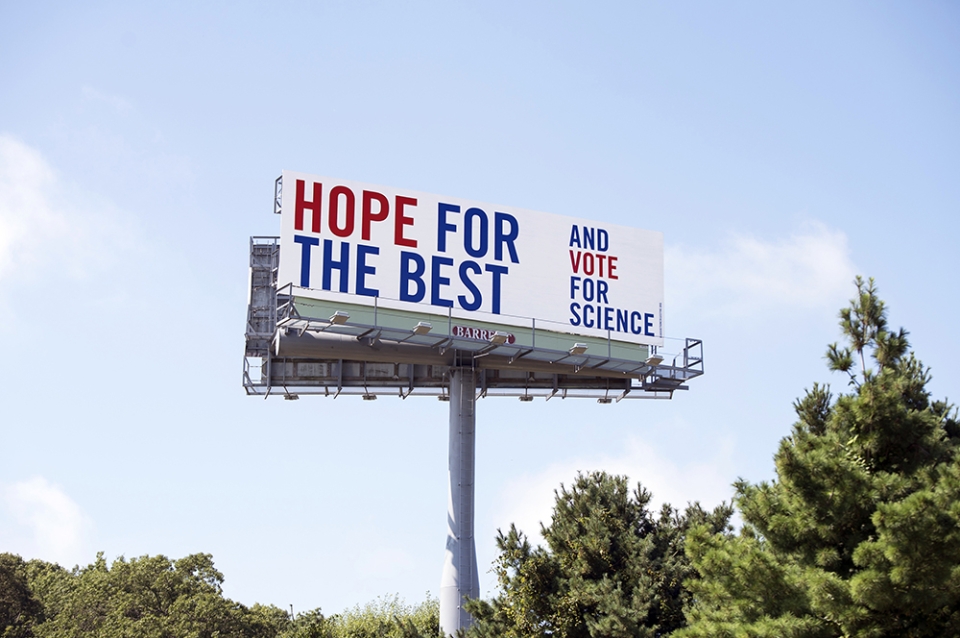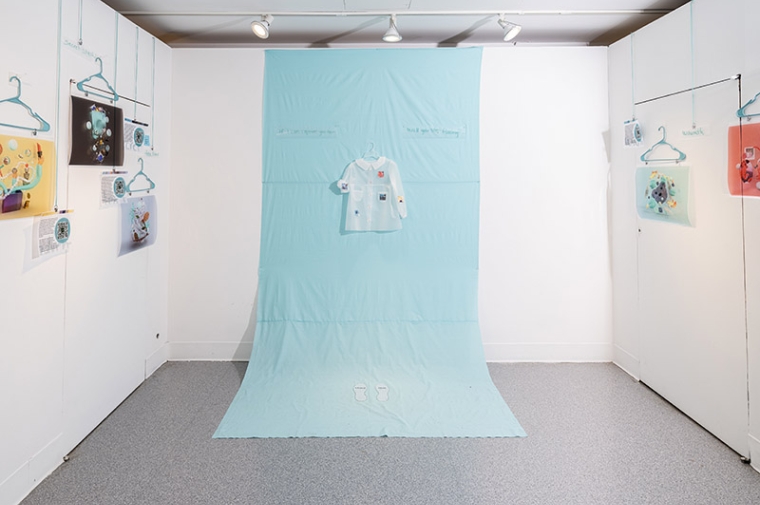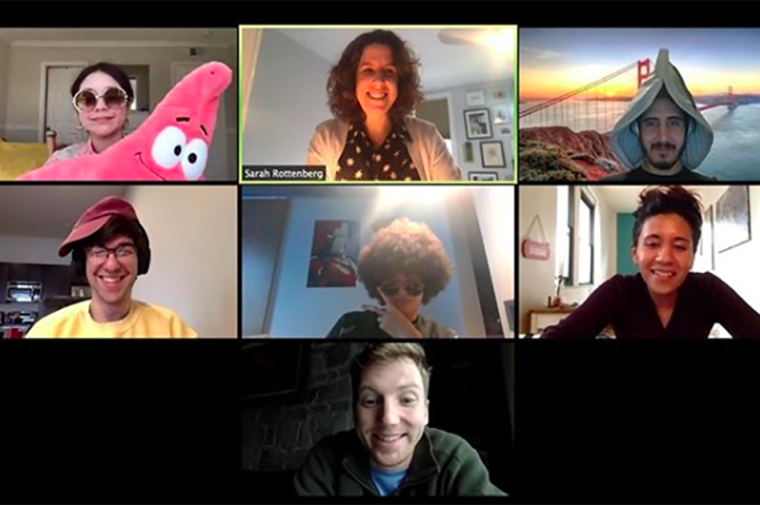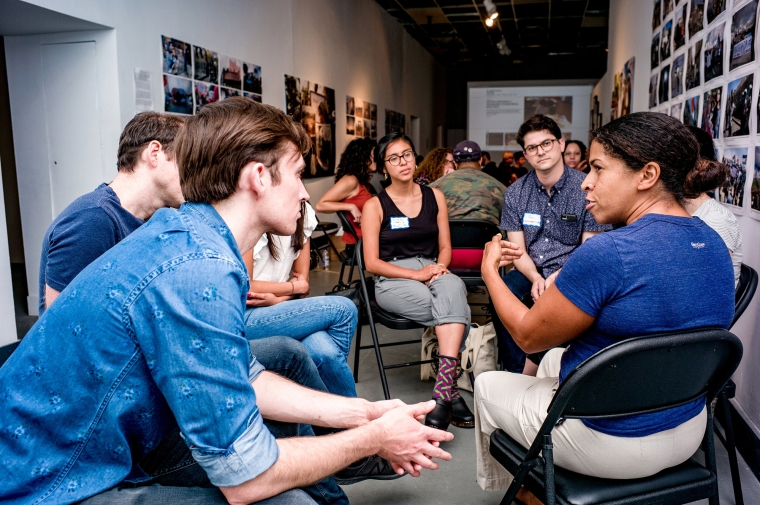October 29, 2018
Stuart Weitzman School of Design
102 Meyerson Hall
210 South 34th Street
Philadelphia, PA 19104
Get the latest Weitzman news in your Inbox
Media Contact
Michael Grant
mrgrant@design.upenn.edu
215.898.2539
If you were driving near New Haven, Connecticut, at all during the last month, you may have seen the billboards.
THANK GOD, they said, in big red and blue letters calling out from a clean white background. PRAY FOR ALL. HOPE FOR THE BEST—AND VOTE FOR SCIENCE.
“It’s definitely the biggest type project I’ve ever worked on,” says David Comberg, a senior lecturer in the Department of Fine Arts. “I think the letters are six feet high.”
The billboards were designed by the collective Class Action, a group that Comberg joined when he was a graduate student in the early 1990s. The work was funded with a $10,000 grant from the Union of Concerned Scientists, as part of an effort called Art for Science Rising, focused on promoting outdoor art that puts science “front and center in decision making processes that affect us all.” Not coincidentally, the billboards were posted in the month prior to the 2018 midterm elections.
Comberg says the slogans and the design were the result of a lot of trial and error among the collective. They had free reign for the project, and the design they finally proposed was one of the last ideas they had. They wanted a message that broke down perceived barriers between religion and science, Comberg says: No matter what your cosmology is, you should support science-based decision making in public life. The final design was the result of distilling and progressively simplifying previous ideas, Comberg says. They wanted something that would stand out among other billboards, which tend to be busy.
“We were intending to be dramatic in our use of minimalist techniques,” he says.
Typography has always been a guiding force in Comberg’s career.
“I guess in college, I just had an epiphany and realized that type was a building block,” he says. “It wasn’t a picture of a thing; it was actually a thing.”
Twelve years ago, during a tricentennial celebration for Penn founder Benjamin Franklin, Comberg and some colleagues put together an idea to create a letterpress at Penn that would help students get “the material experience of the letter as a thing.” That idea became Common Press, a collaborative letterpress and book arts studio now housed in the Fisher Fine Arts Library.
Next year, working with a grant from The Sachs Program for Arts Innovation, Comberg will create a “mobile poetry press” to celebrate the 200th birthday of Walt Whitman.
“It’s a grant to develop a course based on a proposal that says, What if we took a press, stuck it on a truck, and drove it around to libraries and public schools as part of the region-wide celebration?” Comberg says.
Comberg says he’s currently working with Catherine Turner, a faculty member in the Department of English, as well as local sculptors the Dufala Brothers on a syllabus for the course. The goal will be to teach young people about Whitman’s work as an artist and an activist, and give them an experience in handprinting.
With luck, a few of those young people will have the same realization Comberg had as an undergrad—that type, unlike text, is more than an abstraction. It’s a material thing in itself.


 Expand Image
Expand Image



